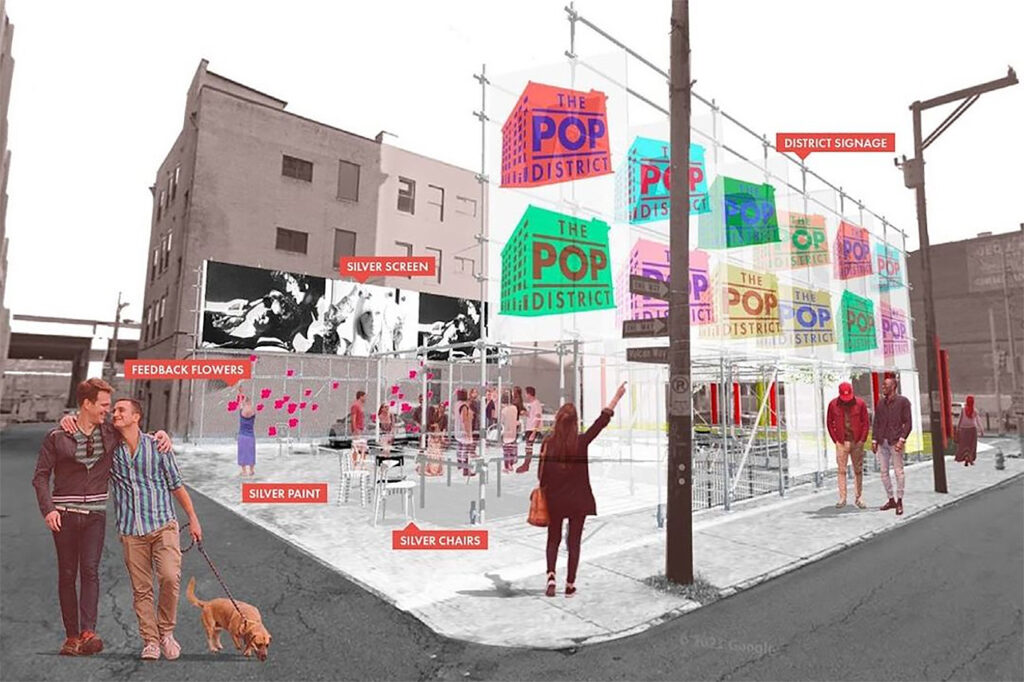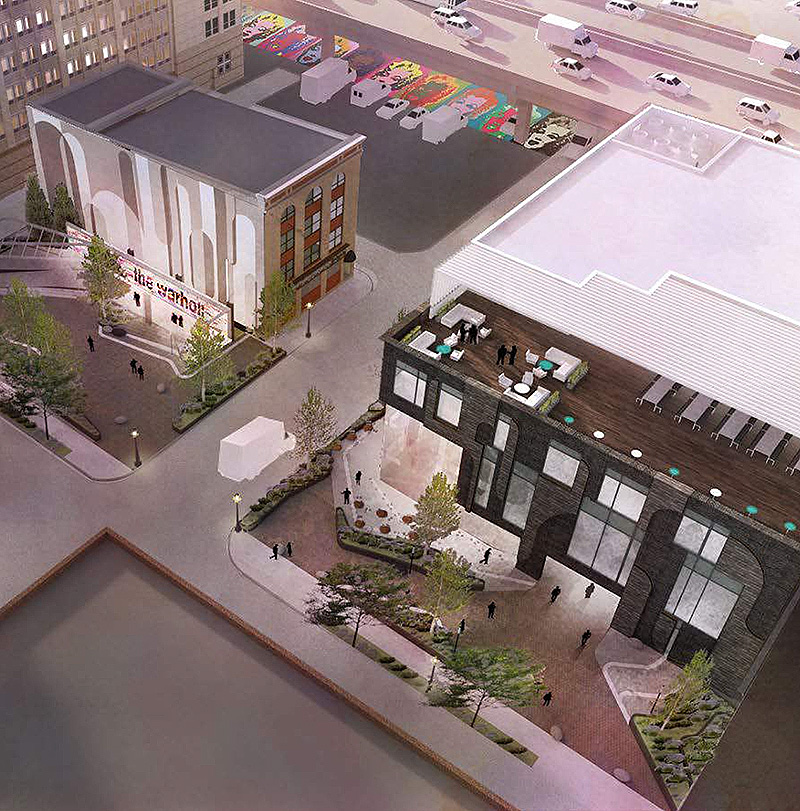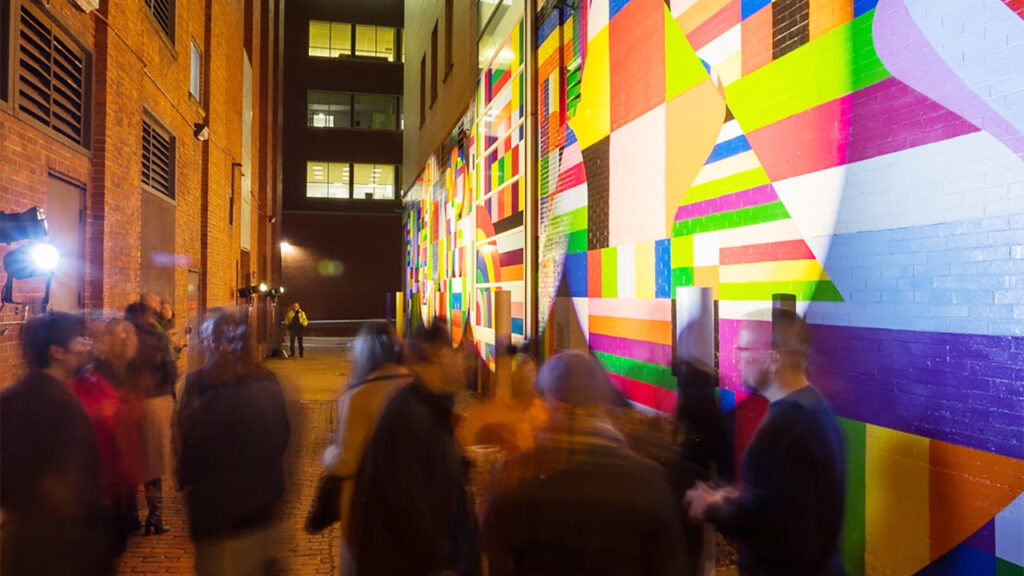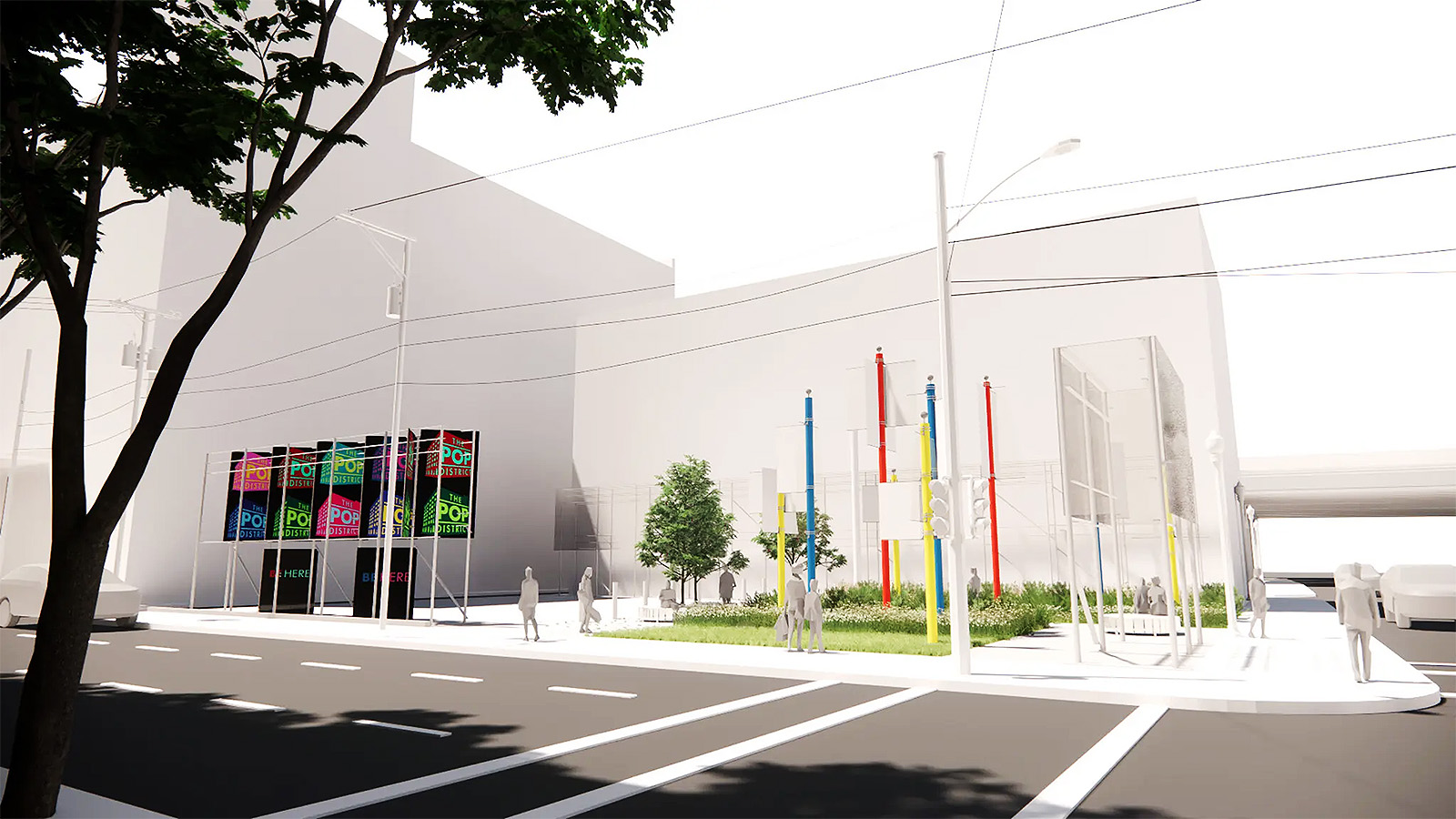In the early 1960s, Andy Warhol’s Silver Factory arrived on the scene. Though planned as a studio where he could paint, the loft in midtown Manhattan would quickly sprout into a fertile space where films were produced, art was made, and Superstars were minted. It was a form of creative placemaking, however nascent and micro in scope. “While one person was making a silkscreen, somebody else would be filming a screen test,” recalled musician John Cale in 2002. “Every day, something new.”
Warhol’s Factory is no more, but the Andy Warhol Museum in Pittsburgh has far more ambitious plans for what the pop artist started. Last week, the institution announced its forthcoming Pop District, a cultural and economic development project that will transform a section of the city into a new cultural hub and tourist destination where presumably, every day, something new might brew.
What’s happening

The Andy Warhol Museum Pop District

The Pop District is set to center on cultural programming and creative talent development, anchored by flagship venues such as a performing arts venue and a creative agency. Images: The Andy Warhol Museum
Following two years of planning, the Pop District will occupy a six-block area in Pittsburgh’s North Shore neighborhood, with a focus on cultural programming and creative talent development. In the former, the Warhol will be leveraging public art, live music, and performance to create a museum-led destination; while the latter will see the institution equipping a diverse group of youths with creative skills through its ongoing workforce program.
Said workforce initiative will encompass a creative agency, a creative entrepreneur lab, a digital marketing certification program, and a youth empowerment program across the Pop District, with the aim of matriculating more than 100 participants each year to create $1 million in annual income. Additionally, the Warhol will partner with regional agencies such as Built Different Creative and Look Creative to ensure the program a professional framework.
The $60-million Pop District is slated to be rolled out in two phases over the next decade. The first phase, already underway with funding from the Richard King Mellon Foundation and the Henry L. Hillman Foundation, will see the launch of public art installations, new education programs, and real estate investments, before phase two kicks in in 2024 with a live performance venue and community rental spaces. According to research conducted in partnership with Chora Creative, the impact of the Pop District is set to exceed $100 million in annual economic activity, while drawing at least 50,000 new visitors to the neighborhood.
Why it matters

The development captures the stated mission of the Carnegie Museums of Pittsburgh, the Warhol’s parent organization, to “turn the museums inside out.” Image: The Andy Warhol Museum
At its core, the Pop District duly captures the creative dynamism of the Warhol’s namesake, though just as significantly, ensures the museum’s impact reverberates beyond its four walls. More than an exercise in community outreach, the project, with its plans to catalyze the cultural economy of the North Shore neighborhood, is as ambitious as it is far-sighted, particularly as it centers youth, diversity, and creativity.
While creating a new source of revenue for the museum, the district demonstrates and deepens the Warhol’s investment in its community — expanding on its workforce development program — in turn cementing its relevance and value to the neighborhood. In this, the institution nails the stated mission of the Carnegie Museums of Pittsburgh, the Warhol’s parent organization, to “turn the museums inside out.”
While doing so, the museum has apparently been mindful of the effects of such a development on its environs. According to Patrick Moore, the museum’s Director, the Pop District will be occupying unused commercial spaces, as opposed to residential property, which should make for no displacement. At the same time, it’s dependent on the Warhol to ensure the project remains sustainable as it grows, with the community’s needs kept up front and in focus.
What they said
“Andy continues to be emblematic of the American entrepreneurial spirit — a true agent of influence and change. We now have the plan and resources to follow suit as an agent of change for Pittsburgh and an example of how creative communities throughout the country can be activated to boost and sustain a local economy through focusing on opportunities and experiences for young people.” — Patrick Moore, Director, The Andy Warhol Museum
“The Pop District will demonstrate the role that museums can and must play in their communities by serving as centers of innovation and catalysts of economic development.” — Dr. Steven Knapp, President and the CEO, Carnegie Museums of Pittsburgh



